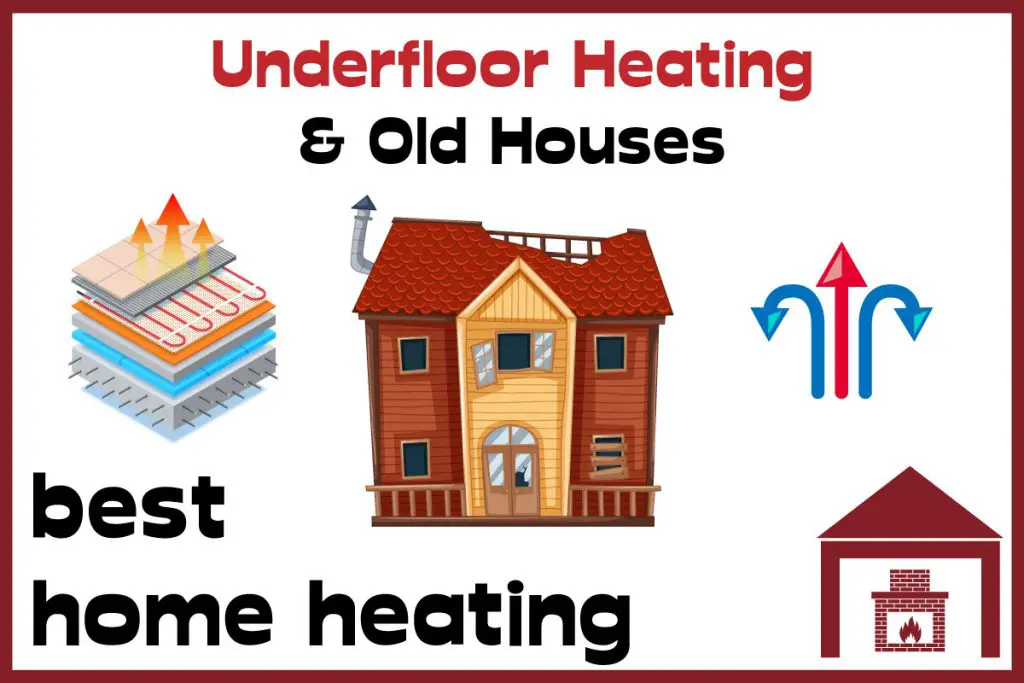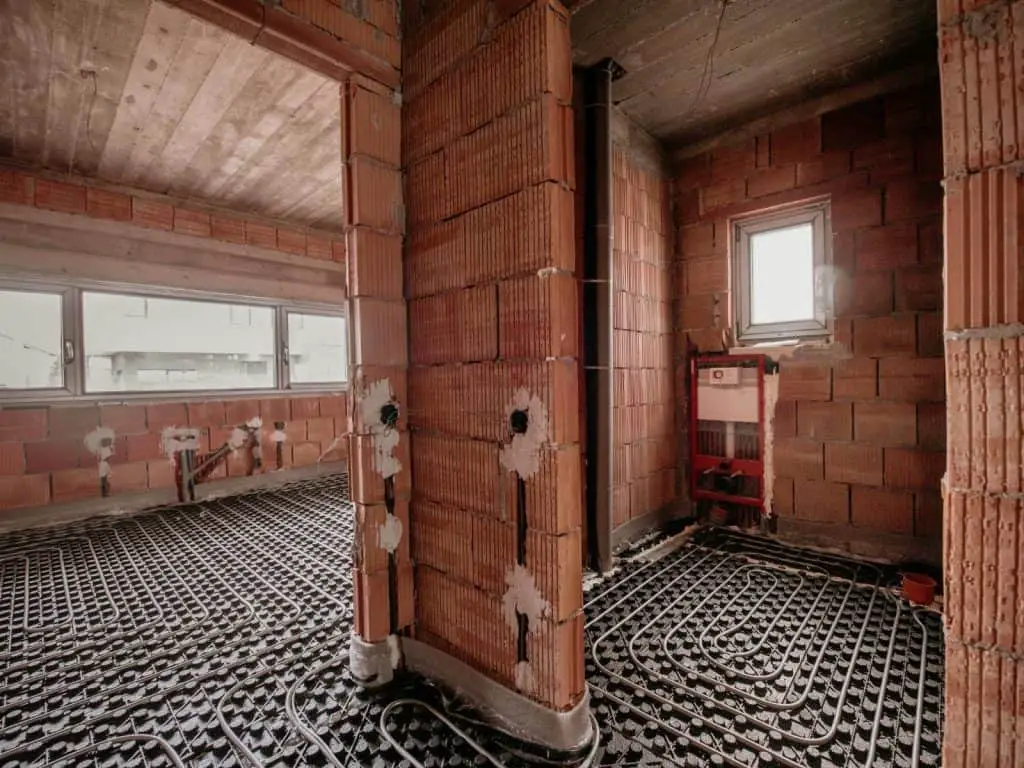Discovering the feasibility of installing underfloor heating in older homes unlocks the potential for modern comfort and efficiency within traditional settings.
Yes, you can install underfloor heating in an old house. However, it’s essential to evaluate the house’s structure and insulation to ensure feasibility. Professional guidance is crucial for a successful and efficient installation.
Curious to learn the ins and outs of installing underfloor heating in an old house? Read on to discover the possibilities and considerations for a cozy upgrade.

Is Underfloor Heating Suitable for Old Houses?
Electric Under Floor Heating (UFH) is suitable for all types of old houses, whether they have wooden or concrete floors. Water underfloor heating could be a bit a of hassle to use in old houses. Suitability also depends whether you are doing retrofitting or refitting project. When it comes to floor heating systems, ‘refit’ implies removing the current heater and putting it someplace else, whereas ‘retrofitting’ involves installing a new heater into an existing house rather than a new-build home.
Older homes are frequently not as well insulated as newer homes. This is why, while installing UFH, it is critical to ensure that the property’s flooring is well insulated. A large portion of the heat generated by UFH will escape from an uninsulated property, particularly through the ground. When installing UFH, an insulating barrier between the floor structure and the UFH will prevent heat from leaking beneath the property.
If an older home has suspended timber flooring, insulating barriers can be installed between the joists. Many older homes have solid concrete floors, where a layer of the insulating board would be a more efficient means of insulation.

Water vs electric UFH in older houses
Houses with wooden floors
If you have suspended wooden flooring in your house, numerous water underfloor heating systems on the market may be placed inside the spaces beneath the original timber floorboards. This may be a difficult undertaking that requires installing the system ‘from above’ or ‘from below,’ with ‘from above’ referring to taking up the floorboards and ‘from below’ referring to removing the ceiling on the floor below the room where the floor heater is to be put.
Electric systems are simple to install in older homes; simply utilize the existing floorboards as a subfloor for the system and cover with a new floor finish of your choosing. Timber also makes an excellent flooring for underfloor heating since it is a naturally conductive material that readily transfers heat.
Houses with concrete floors
In the case of houses with concrete floors, water underfloor heating is the most difficult option to go for. It involves you ripping up the floor and installing water pipes.
Contrarily, If you already have a polished concrete floor, you should be able to install insulation as well as a low-profile electric floor heater. On top of it, a layer of leveling compound and polished concrete can be applied.

Can you put UFH under existing floor boards
The majority of older homes have suspended wood flooring. There are several approaches to installing a wet underfloor heating system in an older home.
One option entails removing the floors and installing a layer of cut-to-size insulating board or mineral wool. Then, with the moist UFH tubes in between, relay the flooring.
Wet underfloor heating systems may use thick pipes, around 1.6 cm in diameter, to transfer water, whereas electric underfloor heating systems utilize wires to carry heat. These wires offer very little height of approximately 0.3 to 0.4 cm beneath the flooring.
Even in an old house, installing an electric UFH system is straightforward. To install the temperature sensor, the installer will require a custom-made mat, a thermometer, floor primer, and tubing. The floors can be readily removed, and the wires may be easily placed into the opening below to heat. The wires are laid out on matting before being linked to the property’s electrical circuit. These can then be controlled by the thermostat that has been placed. Electric underfloor heating mats are extremely thin and may be simply installed beneath flooring or tile adhesive.
Why are they less suitable
More expensive for the renovation than new construction
In comparison with new houses, under floor heating costs usually cost more to install in old houses. According to greenmatch.co.uk, it costs almost twice to install UFH in an old house than the new house. You might have to spend around 5000$ and 10000$ to install electric and wet UFH in an old house, respectively.
Issues with insulation and heat loss
Insulation is a critical factor in UFH. Ideally, there should be adequate insulation beneath the underfloor heating pipe to prevent heat from escaping below. As you might assume, you want as much heat as possible to rise and enter the room.
The insulation level and fabric of the building should always be considered when designing an underfloor heating system since they impact the system’s effectiveness. If a building is well-insulated, the UFH may be built to operate at temperatures as low as 40°C. This saves energy as well as money.
Usually, old houses are not well insulated and you might have to spend more bucks to first insulate them and then install under floor heating.
How to insulate older houses for UFH?
If an older house has suspended timber flooring, insulating barriers can be installed between the joists. Many older homes have solid concrete floors, where a layer of the insulating board would be a more efficient means of insulation.
When installing underfloor heating in an old house, it’s also crucial to keep the structure’s balance in mind. In an old house, concrete flooring and moisture-proof membranes can cause dampness to permeate through the floor and walls. If this is the case, limecrete can help to remedy the problem. Limecrete is a permeable material, as opposed to a concrete insulated floor and DPM that collect moisture below the floor level and spreads it throughout the property.
Compatibility with existing, older heating systems
Even if your property has a boiler, you may have underfloor heating installed. However, certain modifications may be required. If your radiators and underfloor heating are powered by the same boiler, a two-port valve must be installed by a professionally certified heating specialist. This is a valve that regulates the flow of water in a central heating system, namely the water that travels from the boiler to the rest of the system. If you don’t have one of these, your boiler may try to run both the underfloor heating and the radiators at the same time, causing it to overheat and enter fault mode. The valve will allow the systems to operate independently.
One downside of underfloor heating is that it may be costly to operate, especially if you intend to utilize it throughout your whole home and eliminate the radiators. You may save money by operating underfloor heating in certain rooms and radiators in others.
Will UFH work with existing, older radiators?
It is simple to install underfloor heating alongside an existing radiator system. UFH can be installed on all floors or in a single room, such as a bathroom or addition.
If the UFH is a typical screed or floating floor system, it will perform best with independent control from the radiators. This compensates for the variation in heat-up time.
If the UFH is a retrofit system with a high heat output and short reaction times, connect it to the existing radiator circuit. This approach warms and cools similarly to a regular radiator system.
Conclusion – Summary of Key Points
Underfloor heating can be installed effectively in an old house thanks to technological improvements. Electric UFH is still the easiest form of installation, and because of advancements in technology, technicians can now deal with water UFH systems in older properties. When installing underfloor heating in an older home, contractors must additionally examine the insulation. Older homes may have inadequate insulation, particularly through the ground, reducing the efficiency of the UFH.
